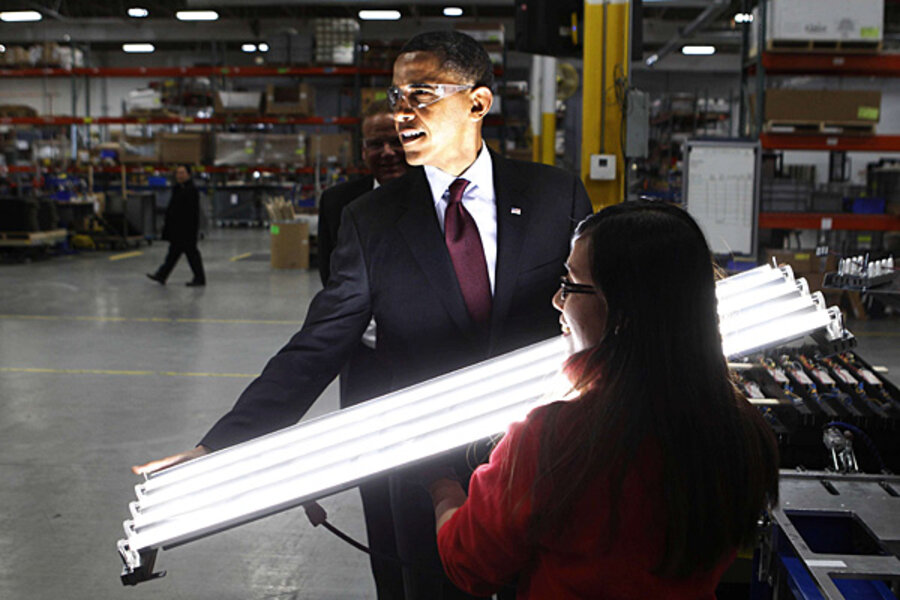State of the Union address: What is Obama's 'energy security trust'?
Loading...
President Obama devoted a significant portion of Tuesday's State of the Union address to America's energy future, culminating in a proposal to direct federal revenue from fossil-fuel production towards clean-energy investment.
"[M]uch of our new-found energy is drawn from lands and waters that we, the public, own together," Mr. Obama said. "So tonight, I propose we use some of our oil and gas revenues to fund an energy security trust that will drive new research and technology to shift our cars and trucks off oil for good."
Obama's proposal is sure to please environmentalists and clean-energy advocates.
“The oil boom has created a unique opportunity to have our cake and eat it too." Robbie Diamond, president and CEO of Securing America’s Future Energy (SAFE) said in a statement responding to the speech. "We can use part of the revenue generated from expanded oil production to fund the research and development of the alternative fuels and vehicles required to end America’s oil dependence."
SAFE is a Washington-based advocacy organization that has previously issued similar calls for an energy security trust. The organization's Energy Security Leadership Council, which counts among its founders a retired Marine Corps general and the chairman, president, and CEO of FedEx Corp., was mentioned in passing in Obama's speech.
SAFE's recommendation is to use revenue from expanded outer continental shelf and Alaskan oil production to pursue oil displacement technologies for the transportation sector. Yearly contributions would be capped and the program would fall under the purview of the Department of Energy and require yearly progress reports to Congress.
That revenue comes mostly in the form of leases the federal government issues to energy companies aiming to tap resources in public lands and waters.
In 2011, those totaled $11.4 billion, up from $11.3 billion a year before, according to the Government Accountability Office. The revenue is shared among federal, state, and Indian tribal governments, and makes up one of largest nontax sources of revenue to the federal government. A vast majority of that revenue – $10.1 billion each year – comes from the oil and natural gas industries.
For some, the plan is a veiled call for more energy subsidies, using taxpayer money to fund work that critics say should be carried out by private companies.
"The energy market is already robust enough that there’s an incentive for alternative energy to reach the marketplace," said Nick Loris, an energy policy analyst for the conservative-leaning Heritage Foundation, in a telephone interview. "That incentive is profit."
Christopher Helman, an energy writer at Forbes, says the trust is a "terrible idea."
"We don’t need any new federal bureaucracy," Mr. Helman writes, "and we certainly don’t need any portion of the $10 billion in federal royalties from oil and gas production on federal lands to go into a slush fund from which bureaucrats get to pick pie-in-the-sky technologies to invest in."
The discussion of an energy trust fund may be a sign Obama will spend more time in his second term exploring ways to circumvent a stalemate in Congress over climate change. Some suggest that federal lease rates may be one arena where the president can act with or without congressional authorization.
"There’s only so many tools the administration has in their toolbox," said Christy Goldfuss, director of the public lands project at the liberal-leaning Center for American Progress, in a telephone interview. "Looking at the money the federal government gets from development of oil and gas on public lands is one of those tools."





